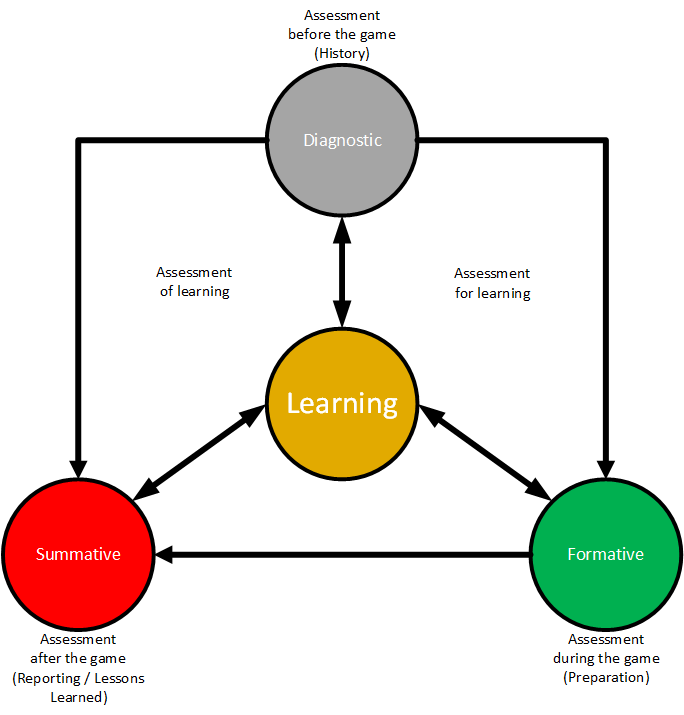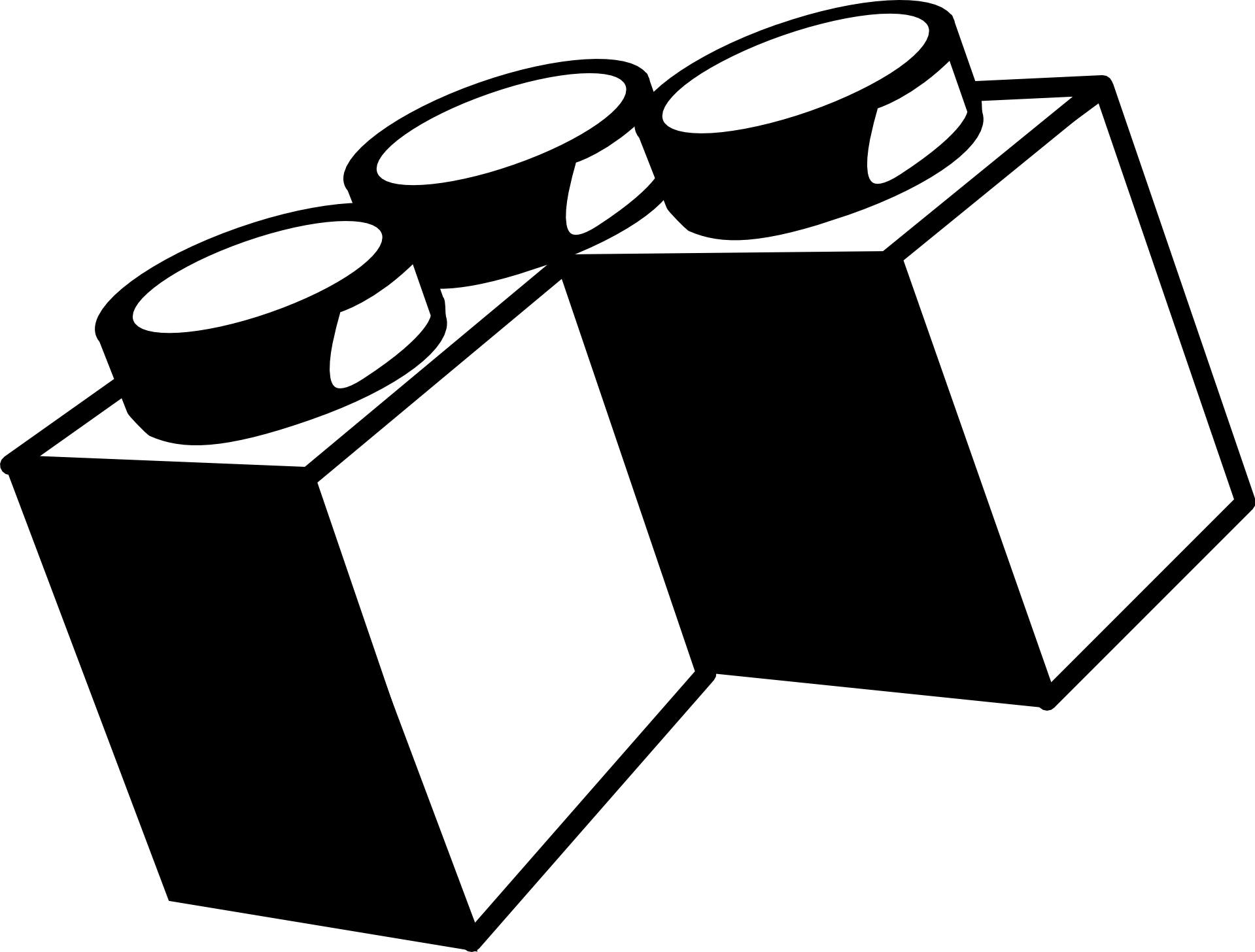This game focusses on activating the learning while playing, and is assessed in three different ways as shown below.
In the picture below, you can see that learning stands central in this game.

Diagnostic Assessment
This only focusses on what knowlegde and experience you already have, and how/where you can use this in the game. It is activated in the ‘history’ phase.
Formative Assessment
In order to improve the learning, formative assesment will be used. It is alway guided by the project coordinator, and it is part of the different activities in the preparation phase of the game. You will not receive a ‘grade’ in formative assessment, it has the goal to give you feedback, so you can improve your work.
Summative Assessment
At the end of a game session, your team will also receive a summative assessment. Details about what this summative assessment entails, and in which form, will be given by the game project coordinator.
In the Game Sessions, you will be evaluated based on customer satisfaction, your preparation, and ultimately the revenue and profit generated by your performance throughout the game:
Customer satisfaction means delivering orders on Time and in Full (meeting the Right Time and Right Quality criteria). Each order will be assessed by the different customers.
The final project will be assessed based on the quality criteria as communicated by MEC, see below
At the end of each session, you must calculate the final revenue and ‘profit’ of your company. This refers to the income you’ve generated minus all associated costs
Assessment criteria Project:
- Group report (result: Group mark)
In this report you describe your output of the assignment ( = product). The report is in fact the showdown of all preparations about how your factory works, a.o. ROI – Financial etc.. details on the Blokko site – all the things you have arranged, planned and agreed on on beforehand to make sure your factory will run smoothly during the simulation. (so don’t discuss the process – that is point 3 – see below.)
Made by the group! So everyone agrees up on the content!
NOTE:
Report; technical aspects
Lay out / presentation in writing
Use of language / spelling
Structure / explanation of the approach
Introduction
Completeness ( preface, bibliography, appendix.)
Maximal size (25 pages) exclusive appendices
The report will be handed in as a PDF file, including all appendices.
- Individual report (result: individual mark)
Made by every individual
In the individual assignment within the BLOKKO project you are going to describe and elaborate – based on the theory taught in trimester 1 of the courses (a.o. Introduction into Economics, Introduction into Logistics) – a theoretical supported view on the department / function for which you are responsible within the BLOKKO project.
Important points are a.o.:
- What are the activities within your department / function?
- Why are you doing this within an organisation / company?
- How are you going to do this? How are you going to achieve your (department) goals)?
- How and where is there any interaction with other (internal) departments? And with other (external) companies / organisations?
- How are you going to organise this (helicopterview)?
All these questions will be answered based on – minimally – the theory and literature from ‘Introduction into Economics’ and ‘Introduction into Logistics’. Additional literature or articles are – of course – allowed to support your story. All this will be presented in a report which follows the guidelines from the ‘Starting project’. Your report is to the point and you use concise language. Your report is maximum 5 A4 sheets – font size 10. The report will be handed in in PDF Format.
Assessment criteria:
| General | Max. score | |||
| – Language and spelling | 10 | |||
| – Structure and lay-out | 10 | |||
| Content | ||||
| – Description of the department within the factory / organisation | 30 | |||
| – Description of the place in the (supply) chain and its impact on the function / role | 10 | |||
| – Completenesand practical usability | 10 | |||
| Theory, argumentation and profoundness | ||||
| – Argumentation based on theory | 20 | |||
| – Profoundness | 10 | |||
- Process report – what happened during the project – what was your contribution?
Made by every individual
- Complete log with all activities (Justification of the time that you spend in this project)
- Your individual evaluation of the cooperation agreement and the process of the group.
- How did you all cooperate?
- What were strong and weaker points of the different members of your group? (so reflect on every single member of the group – use your minutes and session evaluation for that)
- Reflect on meetings (roles of the chairman, minutes….. etc)
- Reflect on the game (who was ‘in charge’ … panicked….kept calm…..blocked etc)
- Reflect on the following topics:
- Your contribution to the final report / product (use for this the ‘competency charts’
- What were your strong and weak points?
- Which input of others / coach did you use to change?
- What have you changed and what is the result?
- Reflect on your two chosen learning objectives and support it with ‘evidence’ e.g.: if the objective is “learning to become a good chairman” you should describe what you did to reach this goals.
- Reflect on the game (minimal 1 A4), how the simulationgame went, in comparison with the situation as given in the group report. You explicitly pay attention to your personal role and tast as well as to the group proces.
